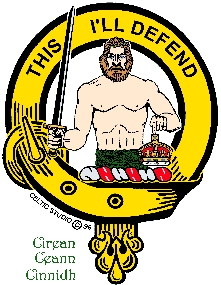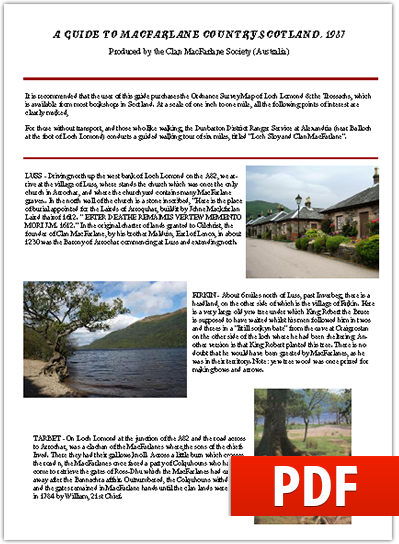2nd Lt.Ian Cameron Macfarlane – A Yorkshire Regiment Officer Who Died in the First World War
A Memorial Roll of The Officers of Alexandra Princess of Wales Own Yorkshire Regiment Who Died 1914-1919, Compiled by Robert Coulson (1952-2008)
http://www.ww1-yorkshires.org.uk/pdf-files/bob%20coulson/officers-died-ww1.pdf
I came across this document quite by accident.I was reading a comment made on another posting regarding the discovery of a name scratched on a wall at Bertangles, that of an A.McFarlane 1918 Australia and decided to do a Google search to see what I could find. I then was sidetracked by this document which lists information about another person entirely, 2nd Lt.Ian Cameron Macfarlane.
Following is an extract of the information which appears on page 146 of the document relating to this officer.Anyone interested in information on the other officers of the regiment who died during World War I should look at the original document mentioned above. read more…
Genealogists always say to begin with yourself and work your way backwards through official records, such as birth, marriage and death certificates.When you finally come to your immigrant ancestor, the Scot, you hopefully will have also found out the name of the Parish in Scotland he or she was born in.
Good in theory – but not always so easy.
The amount of information recorded on an Australian certificate varies greatly depending on the time period in question, and the State in which the event took place.We are fairly fortunate here in Victoria as our certificates are fairly comprehensive and we are able to find out the parent’s birthplace on the birth certificate of their child, or from their marriage or death certificate.Bearing in mind however, that the information on the death certificate is only as reliable as the informant (obviously not the person themselves). However, a person looking in South Australian records would find that this information was not recorded on birth, death or marriage certificates until 1907.
For an excellent guide to what you can expect to see on an historical Australian birth, death or marriage certificate please visit http://www.jaunay.com/bdm.html
Taming the Scots
(English language version) by Malcolm Lobban
The Scots may think they were hard done by during the period of Margaret Thatcher’s Tory regime. Well, I would like to put the historical record straight. The rot set into that old country up there long before the arrival of the ‘Iron Lady’.As a matter of fact, it was another dame called Margaret who helped to head the ball, as it were, into the Scottish goalmouth, and she too was English.
It probably all began as far back as the year 1030.The body of a king was found lying outside a blacksmith’s forge near Elgin, Morayshire. His name was Duncan ~ although some people called him ‘Duncan the Gracious’. I think this was due to the fact that he never used swear words, and always said “pardon” after breaking wind! Nevertheless, it appears that the poor sod was murdered. read more…
 www.clanmacfarlanegenealogy.info
www.clanmacfarlanegenealogy.info
This is the website of our New Zealand member and genealogy advisor, Andrew Macfarlane from Palmerston, and it is a fantastic resource for those tracing their family history.
Many years have been devoted to the research and documentation of Macfarlane and associated families, as well as connected clans.Andrew gratefully acknowledges all those who have made submissions to the website, in particular, Chevalier Terrance MacFarlane for his continuing research into Clan MacFarlane and its cadet branches.
There are some interesting statistics listed on the site:
- Total individuals: 82,216
- Total families: 36,278
- Average lifespan: 59 years, 254 days
- Earliest Birth: Abt 1001
- Longest lived: Lillias Dunlop McFarlane (132 years)
- Top 25 Surnames: No.1 spot, not surprisingly, is Macfarlane with Fraser taking out No.25
You can do a wide variety of searches on the site.Searching on a surname will bring up a list of individuals with further data.You can also search by a number of other criteria such as place name or cemetery.Photos of some headstones are also displayed, such as the one I found of the burial slab for Malcolm MacFarlane and wife Elizabeth in Luss Churchyard.The site also has a comprehensive listing of the source of the information.Information can also be downloaded from the site.
Our Society would like to show our support by encouraging members to contribute information to this site.This may either be done by contacting Andrew directly, or by giving me, as Secretary, your permission to pass on your family history information.Your privacy will be respected as the site does not publish information on living people, apart from mentioning the source of the information.It is helpful, however, if you provide this information to Andrew so that he can help establish family connections.
If you already have your family history information in Gedcom format then Andrew can easily incorporate it into the site (living persons will be automatically removed), however he is just as happy to receive information or suggestions via email or to input it from paper based documents.
Andrew Macfarlane is also a Group Co-administrator for the Official MacFarlane DNA Project at Family Tree DNA.
For further information please contact:
Andrew Macfarlane – Email: clanman@inspire.net.nz
Recording Your Family History
Recording Your Family History
If you are looking for a genealogy program to record your family history you can’t go past the FREE download available from the Family Search website.http://www.familysearch.org/paf
On the download page you will also see a link to FREE online lessons in how to use the program.
The following is the “blurb” from the website: read more…
Saints of the High Road
Having been raised close to Loch Lomond, I have long been fascinated by the legendary tales that surround this beautiful district of Scotland.My childhood imagination thrilled with stories of fish without fins, waves without wind, a floating island and a submerged church.
‘The Loch’ ~ as it is known locally – is the largest area of fresh water in Great Britain (27 square miles, and over 600 feet at its deepest point) and was at one time an arm of the sea, becoming land-locked at the end of the last Ice Age.
Loch Lomond environs show signs of man’s presence dating back to Neolithic times (4000 BC).Early Celtic activity in the district is reflected in various place-names, in particular those with ecclesiastical connections.It could be said that the ancient clerics were among the first to ‘take the high road’, as it were! Thus, it is with these religious sites that my interest lies, whilst inviting the reader to come with me, in theory at least, on my pilgrimage into olden times around The Bonnie Banks.
Clabby-doos at Arrochar
Whereas it is a historical fact that the wild MacFarlanes frequently descended upon the fertile plains of Lennox to plunder and generally make a nuisance of themselves, it is less well known that natives of the Vale of Leven ~ in more recent times ~ occasionally invaded Arrochar in pursuit of other precious items! I refer, of course, to the ubiquitous ‘clabby-doo’!
For those unacquainted with the creature and the ritual of its capture, let me explain.The upper stretches of Loch Long at Arrochar were noted breeding grounds of a large mussel, styled in the Gaelic language clab-dubh (clab = mouth, dubh = black), which was considered a great delicacy among Vale and Dumbarton folk, who generally called it ‘clabby-doo’, being near the true pronunciation.
Unlike the common mussel, which is usually found in great clusters on the outgoing tide, the elusive clabby (as large as a man’s hand) was more of a solitary creature, which remained in deeper water, and was generally anchored by its ‘beard’ to a large stone. Moreover, it appears that the species is found only in certain areas around Scotland’s west coastal waters.
Summer months saw many Vale folk heading for Arrochar ~ and the neighbouring shoreline of Ardgarten ~ to picnic and bathe. Even when the tide was out, the ‘clabby-doo’ remained under water and had to be dived for.However, the result was worth the effort; for just three such giants made a meal to behold ~ better still when boiled then fried in a pan with a rasher of Ayrshire bacon! Aye…those were the days!
Extracted from Editorial “MacFarlane’s Lantern”, Issue No.100 – December 2006
Morlaggan Dig Project
Ships Our Ancestors Arrived On
Below you will find a list of some of the ships on which our members’ ancestors arrived on.There are of course many (like my own family) who have yet to find their ancestors names in the available passenger lists.In time we hope to include further information on these ships such as links to photos, logbooks and passenger lists.
“SS Orvieto” (Orient Line) – Arrived Brisbane, Queensland, 5 May 1924
“Elizabeth” (Barque) – Arrived Port Adelaide, South Australia, July 1849
“Marco Polo” – Arrived Victoria 1851/1852
“Three Bells” – Arrived Melbourne, Victoria, June 1852
“Marmion” – Arrived Portland, Victoria, December 1852
“Sarah” – Arrived Port Adelaide, South Australia, October 1866
“Ontario” – Arrived Sydney, New South Wales, 26 November 1852
“Epaminondas” – Arrived Port Adelaide, South Australia, August 1852
“Peerless” – Arrived Sydney, New South Wales, June 1866
“Steadfast” – Arrived Adelaide, South Australia, 18 November 1852
“Agra” – Arrived Sydney, New South Wales, March 1853
“Othello” – Arrived Sydney, New South Wales, 15 March 1834
“Otway” (Orient Line) – Arrived Melbourne, Victoria, August 1909
I am going to start a listing here of the books in our Clan Library which I will add to gradually (when time permits).Here is my first offering:
History of Clan MacFarlane by James Macfarlane – Originally published 1922 by David J.Clark Limited, Glasgow, under the auspices of the Clan MacFarlane Society, Glasgow. (Original book not available for loan, but CD version is available for members.)
Other books by James Macfarlane available on CD for members are: The Honour of Lennox; The Red Fox.
MacFarlane’s Genealogical Collections by Walter Macfarlane, 1900 (CD Version published 2007 by Archive CD Books Australia Pty Ltd).

